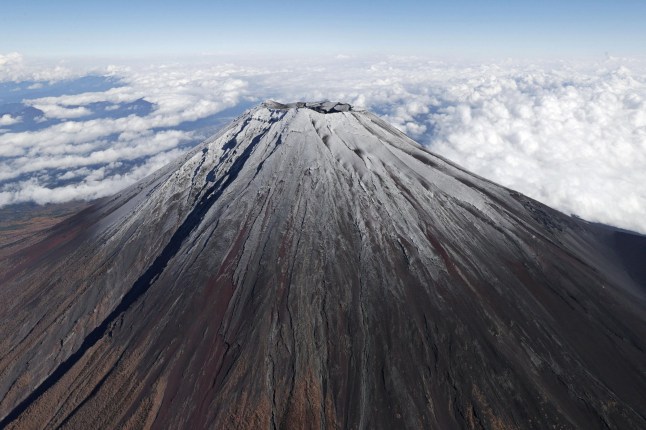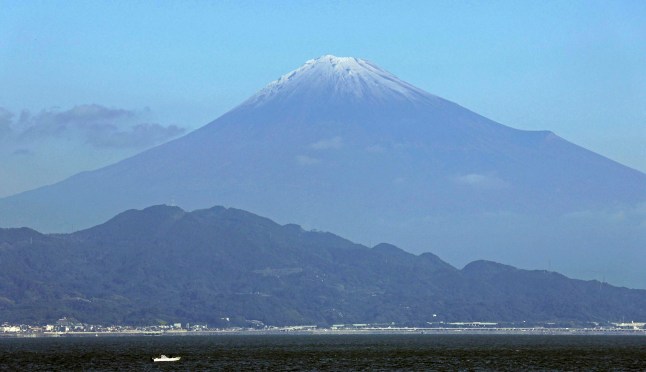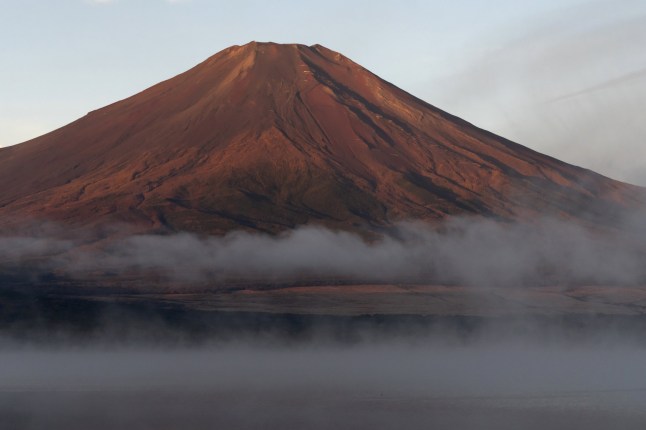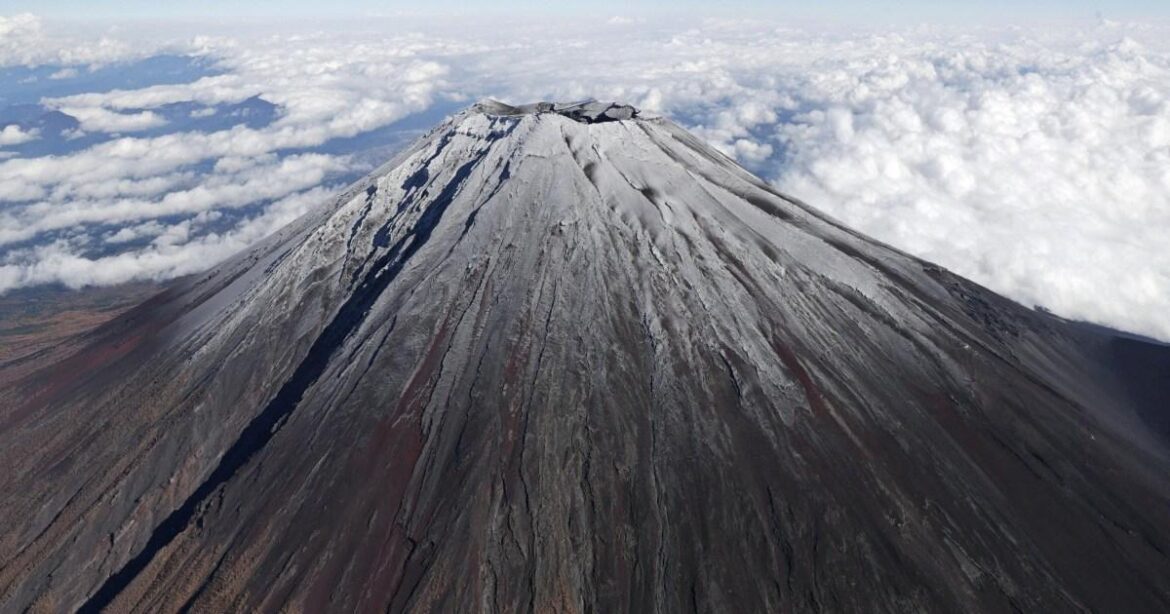
Mount Fuji and its white peak are a national symbol of Japan, and was once a place of pilgrimage (Picture: Kyodo via Reuters)
The snow-capped peak of Japan’s Mount Fuji has finally formed after the most-delayed snowfall since records began.
Its white tip is one of the most iconic sights in Japan, but the volcano’s slopes remained bare until Wednesday, November 6 – the latest date in 130 years
Usually, Mount Fuji’s snow cap starts to form on October 2. Last year, it began forming on October 5, almost exactly a month earlier than this year.
Snow was first reported on the southwestern side of the mountain by the Shizuoka branch of the Japan Meteorological Agency on Wednesday.
But the job of announcing the snow cap’s arrival has fallen to the Kofu branch since 1984.
They’re based on the other side of the mountain, where clouds have blocked their view of the mountain, meaning it’s not official just yet.

The first snow of 2024 fell on Mount Fuji on November 6, the latest date ever recorded (Picture: Kyodo News via AP)

Mount Fuji was snowless throughout October for the first time since records began 130 years ago (Picture: Tomohiro Ohsumi/Getty Images)
Either way, this is the latest date for snowfall since records began in 1894, forecaster Yutaka Katsuta said. The previous record, of October 26, had been recorded twice in 1955 and 2016.
Such a long absence amid the highest mountain temperatures since 1932 sparked worldwide concern about the impact of climate change.
Warmer than usual temperatures across Japan this summer and autumn have contributed to the delayed snowfall on Fuji’s peak, its meteorological office said.
On average, the temperatures at the summit is -2°C in October. This year, it was 1.6°C, a record high since 1932.
Yutaka added: ‘Temperatures were high this summer, and these high temperatures continued into September, deterring cold air.’

Mount Fuji is most commonly seen with a white, snowy peak (Picture: Getty Images)
Japan has seen its joint hottest summer on record this year, equalling the record set last year, and Yutaka said climate change could have had an impact on the delay in the snow cap’s formation.
But thankfully snow is set to return to Fuji soon, as the Japan Weather Association predicts the first snow at the peak could fall by November 7, after rainfall early next week.
Mount Fuji facts
Where is Mount Fuji?
Mount Fuji is located on the Japanese island of Honshu, the nation’s biggest island, about 60 miles (100km) west of the Tokyo-Yokohama metropolitan area.
What is the height of Mount Fuji?
The mountain is 3,776 metres tall, equivalent to 12,388 feet.
When is the best time to climb it?
Mount Fuji’s hiking season is between July and September every year.
Mount Fuji, a symmetrical volcano immortalised in countless artworks, is covered in snow for most of the year.
The volcano last erupted about 300 years ago and it is the highest mountain in Japan.
The snow tends to melt over the summer, paving the way for hiking season which sees more than 220,000 people climb its steep slopes each year.
Many choose to hike overnight to watch the sunrise from the summit.
This year saw fewer hikers attempt the peak, however, after an entry fee and daily cap on numbers were introduced to try and fight overtourism.
Get in touch with our news team by emailing us at webnews@metro.co.uk.
For more stories like this, check our news page.
Arrow
MORE: Lucy Bronze: Lionesses have great moments ahead but we have to handle greater expectations
Arrow
MORE: Five people killed after flash floods tear through state on election day
Arrow
MORE: Readers discuss Labour’s uni fee
increase and if Kemi will swing further right
News Updates
Stay on top of the headlines with daily email updates.


AloJapan.com